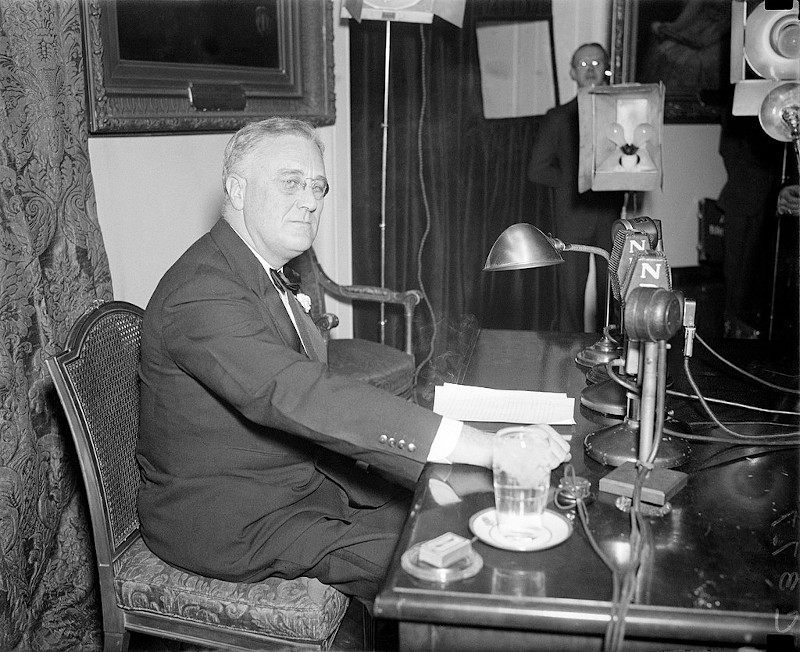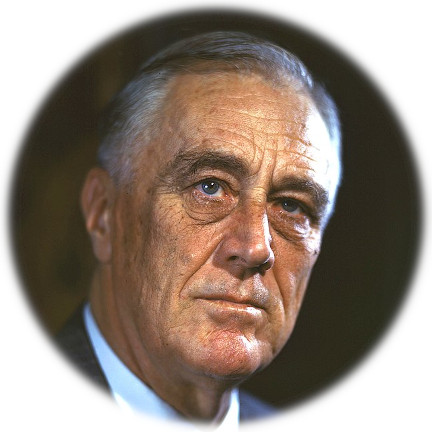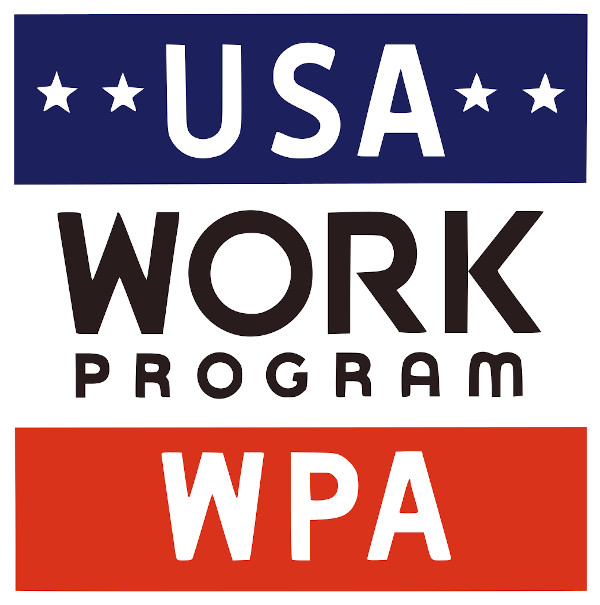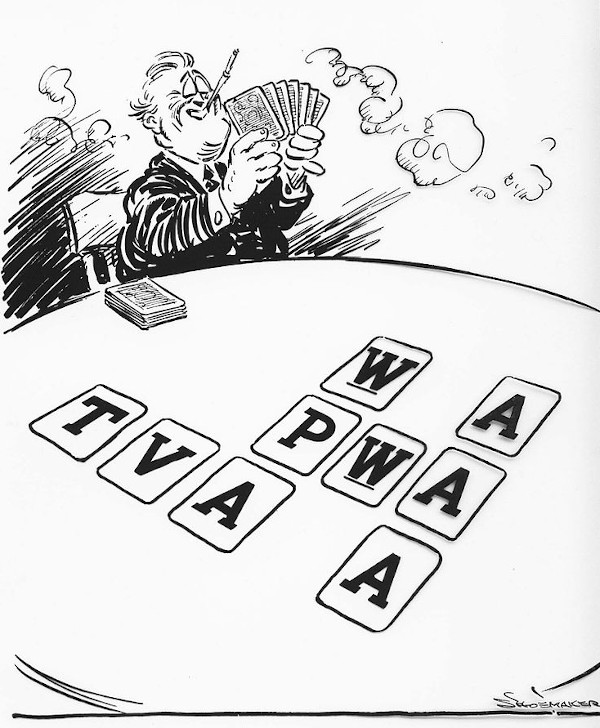Works Progress Administration (WPA)
05/06/1935 AD decreed
By presidential order, Roosevelt nationalized unemployment relief through the Works Progress Administration (WPA), as a key part of the Second New Deal.
Headed by close friend Harry Hopkins, Roosevelt had insisted that the projects had to be costly in terms of labor, beneficial in the long term and the WPA was forbidden to compete with private enterprises—therefore the workers had to be paid smaller wages.
The Works Progress Administration (WPA) was created to return the unemployed to the workforce. It financed a variety of projects such as hospitals, schools, and roads, and employed more than 8.5 million workers who built 650,000 miles of highways and roads, 125,000 public buildings as well as bridges, reservoirs, irrigation systems, parks, playgrounds and so on.
Prominent projects were the Lincoln Tunnel, the Triborough Bridge, the LaGuardia Airport, the Overseas Highway and the San Francisco–Oakland Bay Bridge.[90] The Rural Electrification Administration used cooperatives to bring electricity to rural areas, many of which still operate.
The National Youth Administration was another semi-autonomous WPA program for youth. Its Texas director, Lyndon B. Johnson, later used the NYA as a model for some of his Great Society programs in the 1960s.
The WPA was organized by states, but New York City had its own branch Federal One, which created jobs for writers, musicians, artists and theater personnel. It became a hunting ground for conservatives searching for communist employees.
Lattitude: 38.9072° N
Longitude: 77.0369° W
Region: North America

Modern Day United States
Subjects Who or What decreed?
-
Franklin Delano Roosevelt (FDR) 32nd President of ...
Objects To Whom or What was decreed?
-
Works Progress Administration (WPA) American New Deal agency...
Timelines (that include this event)
Events in 1935 MORE












